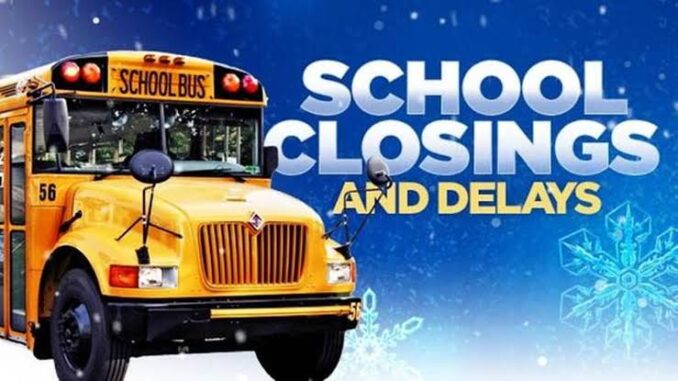
Okay, I will analyze the provided text about school closings in the Chicago area due to extreme cold. Since I don’t have the full 1000-word text, I’ll give you a general analysis and the types of information I would expect to find within such an article.
**Likely Content of a 1000-Word Article on School Closings Due to Extreme Cold in Chicago:**
* **Headline and Introduction:**
* The article likely starts with a clear headline (as provided) and a concise introduction summarizing the situation. It would establish the context of the extreme cold weather event impacting the Chicago area and immediately state that schools are closed.
* It may provide details on the severity of the cold (e.g., wind chill factors, record lows), the timing of the event, and the geographic scope (mentioning specific counties or regions affected).
* **Specific School Closures:**
* The core of the article would include a list of specific schools and school districts that are closed. This section could be presented in several ways:
* **Comprehensive List:** A detailed list of all schools closed, likely organized alphabetically by school district or county.
* **Highlighting Major Districts:** Focusing on the largest school districts in the area (e.g., Chicago Public Schools – CPS) and then mentioning closures in surrounding districts.
* **Interactive Elements:** If online, it might link to websites or provide a dynamic map showing school closures.
* The information on each school would include:
* School name.
* School district.
* Confirmation of closure.
* If applicable, the dates of closure (e.g., “closed on [date]”, “closed for [number] days”).
* **Reasons for Closures:**
* The article will delve into the reasons behind the closures. Common factors include:
* **Extreme Cold Temperatures:** Primarily the danger to students who are waiting for transport to school.
* **Wind Chill:** Danger of frostbite.
* **Safety Concerns:** Reduced visibility on roads, potential for frozen pipes, heating system failures.
* **Transportation Issues:** Potential for bus routes to be disrupted, making it difficult for students to get to school safely.
* **Guidance from Authorities:** References to guidelines from city officials, weather services, and school boards regarding when closures are warranted.
* **Impact on Students and Families:**
* This section discusses the broader consequences of the closures.
* **Childcare Challenges:** Many parents rely on schools for childcare. The article would discuss the logistical challenges and impact on working parents.
* **Learning Disruption:** Addressing the loss of instructional time, with possible mention of whether schools would be offering remote learning or if make-up days would be scheduled.
* **Availability of resources:** In times of cold weather, some schools may provide students with food, and safety from extreme cold.
* May include quotes or input from parents, teachers, or school administrators about the challenges.
* **Impact on School Staff:**
* Schools may also have staff impacted by inclement weather.
* **Work Requirements:** Depending on the district, staff may still be required to report to school.
* **Staff Safety:** Discussion on the potential impact on teachers and staff.
* **Weather Forecast and Conditions:**
* The article will include information about the current and forecasted weather conditions.
* **Temperature Readings:** Details on actual temperatures, wind chill values, and expected lows and highs.
* **Weather Alerts:** Information on any weather warnings or advisories issued by the National Weather Service (NWS).
* **Duration of the Cold Spell:** When the extreme cold is expected to end and schools can safely reopen.
* **Emergency Response and Preparedness:**
* This section might discuss the emergency response efforts related to the cold.
* **City Services:** Mentioning the availability of warming centers, outreach to vulnerable populations (elderly, homeless), and efforts to keep roads clear.
* **School Preparedness:** How schools prepare for these events, including plans for notifying parents and communicating with staff.
* **Advice for the Public:** Information on how to stay safe during extreme cold weather.
* **Historical Context (if applicable):**
* The article may provide historical context, mentioning the last time there was an extreme cold snap in Chicago, or if there were similar school closure situations.
* **Updates and Changes:**
* The article may mention that it is a developing story and that it will be updated as the situation evolves.
* **Changes to Closure Status:** Note if any schools are reopening or extending closures.
* **Transportation Impacts:** Updates on public transportation delays or suspensions.
* **Contact Information/Resources:**
* The article should provide links or contact information:
* School district websites.
* Local government websites (for information on warming centers, etc.).
* The National Weather Service website.
* Social media accounts (e.g., Twitter) for updates.
* **Visual Elements:**
* The article would likely include photos or videos.
* **Images:** Photos of the cold weather, empty school buildings, weather maps.
* **Videos:** Brief news clips, interviews with officials, or footage of the weather conditions.
**In summary:** A 1000-word article would comprehensively cover the school closures, the reasons behind them, the impact on the community, the weather conditions, and the response from authorities. It would provide detailed information to inform parents, students, and the public about how to navigate the situation.
Leave a Reply